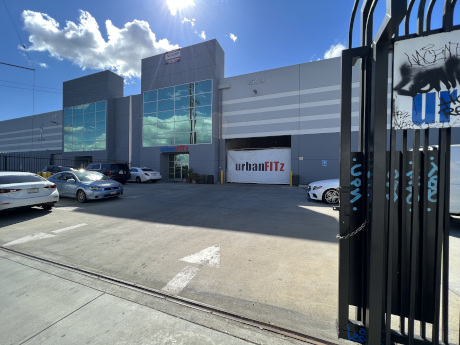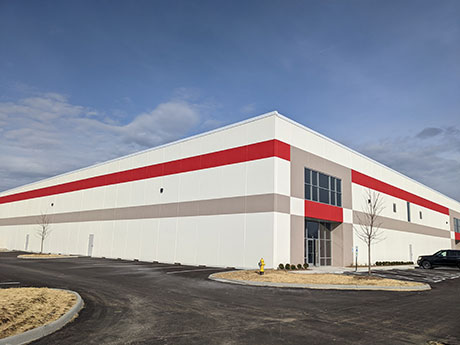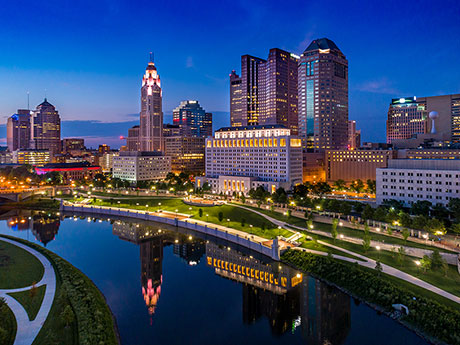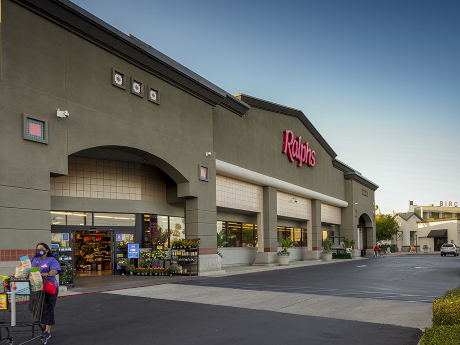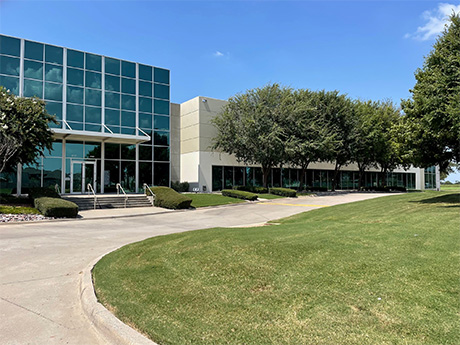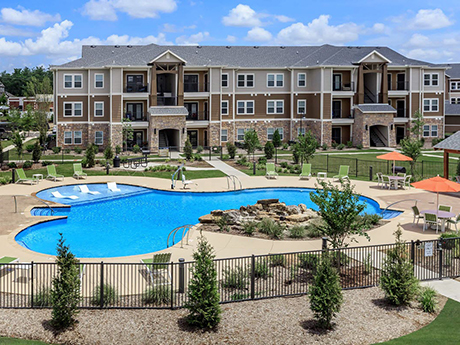By Taylor Williams Industrial brokers and developers throughout New Jersey and Eastern Pennsylvania are flush with tenant demand, but the frenetic pace and frequency at which revenues and costs change in this market has introduced a whole new set of operating challenges. In terms of the supply side of the market, developers of industrial product, like those of every other property type, have been squeezed by supply chain disruption. Prices and lead times for ordering key materials change radically and often without warning. Developers who try to circumvent these obstacles by ordering way earlier than normal in the process now run an increased risk of having to take delivery of supplies without having all permits and sources of construction financing in place. Such a misfire in timing can create lags in delivery, potentially alienating tenants needing turnkey space and generating additional short-term costs via storage of the materials before construction begins. In addition, misaligning these timelines can spook potential investors that want the certainty of knowing that a project is moving forward. “We’re buying supplies a year in advance and trying to sync up deliveries of those materials with when we expect to have full project approval,” says Peter Polt, …
Market Reports
The Sun Belt is experiencing unprecedented growth with in-migration trends setting the stage for further expansion and bolstering in-place multifamily product. This includes Birmingham, which has weathered COVID-19 well not only from an employment perspective, but from a rent growth perspective too. The latter is not sustainable without the former, and local capital investments point to more tailwinds. Birmingham has been on the move, adding 60,000 jobs since April 2020 and becoming the primary driver of economic growth in Alabama. With the influx of new jobs, the city has surpassed its pre-pandemic peak and as a result, the city’s rent growth has outperformed the national average for several years. There was a short period where downtown rents and velocity fell off during the pandemic, but it came back fast and strong. Riding the tailwinds One notable example of in-migration, both investment and population wise, was when Landing announced it would be relocating its headquarters from San Francisco to Birmingham. Landing is a tech startup that provides access to a network of fully furnished apartments, and its move to the city is expected to create more than 800 direct, full-time jobs. The announcement was exciting locally as Birmingham presumably wouldn’t have …
By Elizabeth Capati, Associate, Colliers Greater Los Angeles A new trend has emerged across Greater Los Angeles’ industrial market that has developers waiting for under-construction projects to capture the highest possible rent near the final development stages or closer to their target completion dates. With rents increasing at historical rates, a certain hesitancy exists, and companies are less likely to sign a lease during earlier development stages. In some instances, landlords ask listing agents to place certain buildings or projects on the market months in advance to build momentum and pique interest. Still, those landlords elect not to review offers until a month or two before their target completion date. Los Angeles is a land-constrained market where all new developments come from knocking down older, functionally obsolete buildings or conversions from other property types. The more contemporary, state-of-the-art facilities with the tallest warehouses and functional loading set the high water mark for new lease rates. With a 0.6 percent vacancy across an 862-million-square-foot market, tenants will continue to aggressively bid for any new big box space that comes to market. The South Bay and San Gabriel Valley markets are the only areas with more than 1 million square feet of development activity. Activity and Incentives …
With low vacancy, positive absorption and robust leasing and investment activity, the Columbus industrial sector is positioned to experience a substantial amount of demand to continue throughout 2022 after a record-breaking year in 2021. Last year set the tone for historic construction and absorption and the market is poised to continue its strong momentum. It is easy to look at the map and see why Columbus is such a great logistics hub given its prime location within a 10-hour drive within 47 percent of the U.S. population, fairly flat topography and direct access to major freeways. There is one big piece of the pie that doesn’t always get noticed, which is the economic development powers that are putting Columbus on the map. Jobs Ohio and OneColumbus have done an incredible job attracting businesses to the state of Ohio. The biggest investment in the history of Ohio was announced this January when Intel revealed plans on building a new chip factory in New Albany. This $20 billion investment really put all eyes on the Northeast part of Columbus. As it gets tougher to get entitlements and zoning in other industrial submarkets, New Albany seems to be carrying a significant amount …
By Bret Nicholson, Retail Specialist, Marcus & Millichap Reno’s retail sector is setting records as of February 2022. Vacancies are hovering near an all-time low of 4.9 percent, and asking rents have risen to new heights, averaging $1.72 per square foot on a monthly basis. Sellers are achieving cap rates comparable to those seen in core markets, resulting in sale prices that many would not have thought possible only a few years ago. A number of factors have contributed to the continued absorption of retail vacancies in Reno. On a local level, Reno now has roughly 150 percent more six-figure jobs compared to 2015. This allows for more discretionary retail spending. In addition, very high construction costs and development delays have forced businesses to consider repurposing existing retail space. For example, a 24 Hour Fitness shuttered at 6155 Neil Road, leaving behind a vacant 24,000-square-foot special-use building. Not long after the health club’s exit, the Coral Academy of Science began renovating the space and is now an operational elementary school. Despite many vacancies having been repurposed and filled since 2020, demand for retail space in Reno continues. About 265,000 square feet of new construction is expected to be completed in 2022, which will be …
After several years in the top 10, Nashville was named the No. 1 “market to watch” in overall commercial real estate prospects, according to Urban Land Institute and PwC’s 2022 Emerging Trends in Real Estate report. Nashville surpassed its supernova competitors (markets with a population between 1 million and 2 million people) such as Raleigh-Durham, Phoenix, Austin and Charlotte. The report credits Nashville’s robust and sustained job and population growth, above-average levels of economic diversity and investment/development opportunities. In short, Nashville’s economy fared relatively well during the pandemic-induced recession, and its industrial market never slowed down. Nashville has been a top location for relocating and expanding industrial-using companies, as its location is unmatched for distribution. Fifty percent of the nation’s population lives within 650 miles of Middle Tennessee, with 24 states falling within that radius. This translates to a one- or two-day truck delivery time to more than 75 percent of all U.S. markets. Additionally, it is one of only six U.S. cities with three major intersecting interstate highways. Nashville’s economy is extremely resilient due to its diversified economy. However, Nashville is not immune to national trends that have affected multiple industrial markets. The cost of construction continues to increase, …
There was a time when an investment in the Columbus, Ohio commercial real estate market had to be justified to outsiders and required a higher return to attract investors. After all, it sits squarely in “fly-over country” in the heart of the rust belt. With the exception of getting a superior return, why would an investor choose Columbus, over say, New York or Chicago? But that’s all changed. Cap rates are now as low as, or lower than, other major markets. Investors have been driven to those markets, despite having a lower cap rate, because they knew rent growth was continuous and the sales price would appreciate over time. For decades, Columbus’ sales prices had remained stagnant due to a lack of increase in lease rates. However, over the past two years, lease rates have been rapidly increasing in the industrial market, and projections expect that trend to continue. The Columbus office market hasn’t seen the same rental appreciation — yet. But projections indicate that there will be rental appreciation in office as well, mostly due to increased demand and lack of speculative development over the past two years, but also due to rising land and construction costs. Because of …
By Glenn R. Rudy, Senior Managing Director, Retail Capital Markets, Newmark We all know the commercial real estate industry is cyclical and there are casualties in every cycle across asset classes. However, retail seems to always be in everyone’s crosshairs. It quite frequently is the tail wagging the dog across institutional investors. Consider this, though: if there is one thing the pandemic has proven (once again), it is that the retail sector as a whole is one of the most resilient in the industry. Nowhere in the country is this statement more evident than here in Orange County. While investment sales activity was sluggish overall in 2021, picking up largely in the fourth quarter, retail leasing activity was record breaking. Annual net absorption turned positive after nine consecutive quarters of losses. Vacancy rates have not yet returned to pre-pandemic levels, but rent growth has reach a new all-time high as of year-end 2021. Tenants and landlords were both motivated to sign leases in 2021 to satisfy the increased market demand from consumers yearning to get out and be social again. Society wanted to spend its money on soft goods, dining out and enjoying the retail experience that was so sorely missed in 2020. On the investment …
With each year that passes in the current cycle, industrial real estate, along with multifamily, becomes more deeply ingrained as a darling asset class among commercial developers, lenders and investors. For all the talk about Americans being social creatures, there remains a massive contingent of the population that, when it comes to shopping, overwhelmingly prefers the convenience and relative anonymity of e-commerce. What started out as pandemic-related justifications for buying goods online as opposed to in-person has given way to a full-fledged, tacit acknowledgement of a trend that was already in place prior to February 2020. As such, demand for facilities — not just traditional, pure-play industrial spaces — that can function as e-commerce fulfillment and distribution centers continues to skyrocket. This trend is even more pronounced in markets with surging populations like those of major Texas cities. Industrial brokers are the ones who see it all. These professionals talk to tenants about acute real estate needs that are critical to serving customers without accruing exorbitant transit costs. Brokers work with developers who must build and price their spaces in accordance with their own escalating cost structures for land and construction. The deals that industrial brokers execute form the backbone …
Suburban household growth in metropolitan Nashville was already outpacing urban growth prior to the COVID-19 pandemic, but has accelerated since the outbreak due to corporate America’s acceptance of work-from-home staffing. Multifamily investors have followed this suburban household growth as well. Two recent examples are in Lebanon and Murfreesboro, both high-growth, high-quality suburbs of Nashville that have recently experienced record-setting transactions. The Pointe at Five Oaks recently sold for $243,000 per unit, setting a record for Lebanon. Vantage at Murfreesboro recently went under contract north of $270,000 per unit, also setting a record for Murfreesboro. We don’t see this activity and record-setting slowing down any time soon due to the lack of supply, overwhelming out of state demand and skyrocketing replacement costs. New multifamily development continues to follow the suburban trend, often times with a mixed-use component. Case in point, Highwoods Properties has completed the assemblage of all 145 acres of Ovation Franklin and is beginning the journey to reimagine and re-introduce one of the greatest opportunities for mixed-use development in the nation. This project will consist of 1.4 million square feet of Class A offices, 950 residential units, 480,000 square feet of retail and restaurants and 450 hotel rooms. Single-family …




